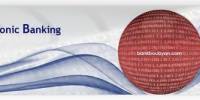Introduction:
The Jews in Jerusalem introduced a kind of banking in the form of money lending before the birth of Christ. The word ‘bank’ was probably derived from the word ‘bench’ as during ancient time Jews used to do money lending business sitting on long benches. First modern banking was introduced in 1668 in Stockholm as ‘Savings Pis Bank’ which opened up a new era of banking activities throughout the European Mainland. In the South Asian region, early banking system was introduced by the Afghan traders popularly known as Kabuliwallas. Muslim businessmen from Kabul, Afghanistan came to India and started money lending business in exchange of interest sometime in 1312 A.D. They were known as ‘Kabuliwallas’.
Banking Sector in Bangladesh:
The banking system at independence consisted of two branch offices of the former State Bank of Pakistan and seventeen large commercial banks, two of which were controlled by Bangladeshi interests and three by foreigners other than West Pakistanis. There were fourteen smaller commercial banks. Virtually all banking services were concentrated in urban areas. The newly independent government immediately designated the Dhaka branch of the State Bank of Pakistan as the central bank and renamed it the Bangladesh Bank. The bank was responsible for regulating currency, controlling credit and monetary policy, and administering exchange control and the official foreign exchange reserves. The Bangladesh government initially nationalized the entire domestic banking system and proceeded to reorganize and rename the various banks. Foreign-owned banks were permitted to continue doing business in Bangladesh. The insurance business was also nationalized and became a source of potential investment funds. Cooperative credit systems and postal savings offices handled service to small individual and rural accounts. The new banking system succeeded in establishing reasonably efficient procedures for managing credit and foreign exchange. The primary function of the credit system throughout the 1970s was to finance trade and the public sector, which together absorbed 75 percent of total advances. The government’s encouragement during the late 1970s and early 1980s of agricultural development and private industry brought changes in lending strategies. Managed by the Bangladesh Krishi Bank, a specialized agricultural banking institution, lending to farmers and fishermen dramatically expanded. The number of rural bank branches doubled between 1977 and 1985, to more than 3,330. Denationalization and private industrial growth led the Bangladesh Bank and the World Bank to focus their lending on the emerging private manufacturing sector. Scheduled bank advances to private agriculture, as a percentage of sect oral GDP, rose from 2 percent in FY 1979 to 11 percent in FY 1987, while advances to private manufacturing rose from 13 percent to 53 percent.
The transformation of finance priorities has brought with it problems in administration. No sound project-appraisal system was in place to identify viable borrowers and projects. Lending institutions did not have adequate autonomy to choose borrowers and projects and were often instructed by the political authorities. In addition, the incentive system for the banks stressed disbursements rather than recoveries, and the accounting and debt collection systems were inadequate to deal with the problems of loan recovery. It became more common for borrowers to default on loans than to repay them; the lending system was simply disbursing grant assistance to private individuals who qualified for loans more for political than for economic reasons. The rate of recovery on agricultural loans was only 27 percent in FY 1986, and the rate on industrial loans was even worse. As a result of this poor showing, major donors applied pressure to induce the government and banks to take firmer action to strengthen internal bank management and credit discipline. As a consequence, recovery rates began to improve in 1987. The National Commission on Money, Credit, and Banking recommended broad structural changes in Bangladesh’s system of financial intermediation early in 1987, many of which were built into a three-year compensatory financing facility signed by Bangladesh with the IMF in February 1987.
One major exception to the management problems of Bangladeshi banks was the Grameen Bank, begun as a government project in 1976 and established in 1983 as an independent bank. In the late 1980s, the bank continued to provide financial resources to the poor on reasonable terms and to generate productive self-employment without external assistance. Its customers were landless persons who took small loans for all types of economic activities, including housing. About 70 percent of the borrowers were women, who were otherwise not much represented in institutional finance. Collective rural enterprises also could borrow from the Grameen Bank for investments in tube wells, rice and oil mills, and power looms and for leasing land for joint cultivation. The average loan by the Grameen Bank in the mid-1980s was around Tk2,000 (US$65), and the maximum was just Tk18,000 (for construction of a tin-roof house). Repayment terms were 4 percent for rural housing and 8.5 percent for normal lending operations.
The Grameen Bank extended collateral-free loans to 200,000 landless people in its first 10 years. Most of its customers had never dealt with formal lending institutions before. The most remarkable accomplishment was the phenomenal recovery rate; amid the prevailing pattern of bad debts throughout the Bangladeshi banking system, only 4 percent of Grameen Bank loans were overdue. The bank had from the outset applied a specialized system of intensive credit supervision that set it apart from others. Its success, though still on a rather small scale, provided hope that it could continue to grow and that it could be replicated or adapted to other development related priorities. The Grameen Bank was expanding rapidly, planning to have 500 branches throughout the country by the late 1980s.
Beginning in late 1985, the government pursued a tight monetary policy aimed at limiting the growth of domestic private credit and government borrowing from the banking system. The policy was largely successful in reducing the growth of the money supply and total domestic credit. Net credit to the government actually declined in FY 1986. The problem of credit recovery remained a threat to monetary stability, responsible for serious resource misallocation and harsh inequities. Although the government had begun effective measures to improve financial discipline, the draconian contraction of credit availability contained the risk of inadvertently discouraging new economic activity.
The commercial banking system dominates Bangladesh’s financial sector. Bangladesh Bank is the Central Bank of Bangladesh and the chief regulatory authority in the sector. The banking system is composed of four state-owned commercial banks, five specialized development banks, thirty private commercial Banks and nine foreign commercial banks. The Nobel-prize winning Grameen Bank is a specialized micro-finance institution, which revolutionized the concept of micro-credit and contributed greatly towards poverty reduction and the empowerment of women in Bangladesh.
Number and Types of Banks:
Central Bank:
1. Bangladesh Bank
Pursuant to Bangladesh Bank Order, 1972 the Government of Bangladesh reorganized the Dhaka branch of the State Bank of Pakistan as the central bank of the country, and named it Bangladesh Bank with retrospective effect from 16 December 1971.
State-owned Commercial Banks:
The banking system of Bangladesh is dominated by the 3 Nationalized Commercial Banks, which together controlled more than 54% of deposits and operated 3388 branches (54% of the total) as of December 31, 2004. The nationalized commercial banks are:
- i. Specialized Bank of Bangladesh:
| 1. | Rajshahi Krishi Unnoyan Bank |
| 2. | Bangladesh Krishi Bank |
| 3. | BDBL |
| 4. | Basic Bank Ltd. |
ii. Private Commercial Ban
Private Banks are the highest growth sector due to the dismal performances of government banks (above). They tend to offer better service and products.
| 1. | Agrani Bank Limited |
| 2. | Krishi Bank |
| 3. | BRAC Bank Limited |
| 4. | Eastern Bank Limited |
| 5. | Dutch Bangla Bank Limited |
| 6. | Dhaka Bank Limited |
| 7. | Islami Bank Bangladesh Ltd |
| 8. | Pubali Bank Limited |
| 9. | Uttara Bank Limited |
| 10. | IFIC Bank Limited |
| 11. | National Bank Limited |
| 12. | The City Bank Limited |
| 13. | United Commercial Bank Limited |
| 14. | NCC Bank Limited |
| 15. | Prime Bank Limited |
| 16. | SouthEast Bank Limited |
| 17. | Al-Arafah Islami Bank Limited |
| 18. | Social Islami Bank Limited |
| 19. | Standard Bank Limited |
| 20. | One Bank Limited |
| 21. | Exim Bank Limited |
| 22. | Mercantile Bank Limited |
| 23. | Bangladesh Commerce Bank Limited |
| 24. | Mutual Trust Bank Limited |
| 25. | First Security Islami Bank Limited |
| 26. | The Premier Bank Limited |
| 27. | Bank Asia Limited |
| 28. | Trust Bank Limited |
| 29. | Shahjalal Islami Bank Limited |
| 30. | Jamuna Bank Limited |
| 31. | ICB Islami Bank |
| 32. | AB Bank Limited |
| 33. | BASIC Bank Limited (Bangladesh Small Industries and Commerce Bank Limited) |
iii. Foreign Commercial Banks:
| 1. | Citibank |
| 2. | HSBC |
| 3. | Standard Chartered Bank |
| 4. | Commercial Bank of Ceylon |
| 5. | State Bank of India |
| 6. | Habib Bank |
| 7. | National Bank of Pakistan |
| 8. | Woori Bank |
| 9. | Bank Alfalah |
Specialized Development Banks:
Out of the specialized banks, two (Bangladesh Krishi Bank and Rajshahi Krishi Unnayan Bank) were created to meet the credit needs of the agricultural sector while the other two ( Bangladesh Shilpa Bank (BSB) & Bangladesh Shilpa Rin Sangtha (BSRS) are for extending term loans to the industrial sector. The Specialized banks are:
| 1. | Grameen Bank |
| 2. | Bangladesh Krishi Bank |
| 3. | Bangladesh Development Bank Ltd |
| 4. | Rajshahi Krishi Unnayan Bank |
| 5. | BASIC Bank Limited (Bangladesh Small Industries and Commerce Bank Limited) |
| 6. | Bangladesh Somobay Bank Limited(Cooperative Bank) |
| 7. | Ansar VDP Unnyan Bank |
MAJOR BANK IN BANGLADESH:
PUBLIC BANK:
- I. Sonali Bank:
Sonali Bank is a state-owned commercial bank in Bangladesh. It is the largest bank of the country. A fully state-owned enterprise, the bank has been discharging its nation-building responsibilities by undertaking government entrusted different socio-economic schemes as well as money market activities of its own volition, covering all spheres of the economy. Sonali Bank Limited singularly enjoys the prestige of being the agent of the Central Bank of Bangladesh in such places where the guardian of the money market has chosen not to act by itself.
History:
Sonali Bank was established in 1972 under the Bangladesh Banks (Nationalization) Order, through the amalgamation and nationalization of the branches of National Bank of Pakistan, Bank of Bhowalpur and Premier Bank branches located in East Pakistan until the 1971 Bangladesh Liberation War. When it was established, Sonali Bank had a paid up capital of 30 million taka.
Functions:
Sonali Bank performs all traditional banking functions including deposit mobilization and lending. The bank discharges the treasury functions as the agent of the Bangladesh Bank. It collects tax, stamp duty and registration fees, operates special savings accounts, pays salaries to the teachers of schools, madrasahs, and colleges and pension to retired government employees. The bank provides funding to some income generating and economic development projects namely, Poverty Alleviation Credit Program, Female Special Credit Program, and Agro-based Industrial Credit Program in the rural areas. It has a large participation in foreign exchange business and off-balance sheet activities. The total volume of foreign exchange business handled by the bank in 1979 was Tk 14.91 billion and in 2000, it was Tk 67.847 billion, 25.87% of which was related to exports, 32.2% to imports, and 41.93% to remittances. At present, the bank has correspondent relationships with 380 foreign banks/bank offices throughout the world.
Sonali Bank monitors its work through a performance budget. It has a marketing intelligence unit and conducts a program of human resources development through training and motivation. It introduced the Lending Risk Analysis suggested by the Financial Sector Reform Program. Business policies of the bank in the 1990s included fulfilling capital adequacy requirement, mobilizing deposits in large amounts, and making investments in more profitable ways. The bank diversified its activities in off-balance sheet items to expand its area of operations and increase non-interest based incomes.
- II. Agrani Bank:
History:
Agrani Bank is a state-owned commercial bank of Bangladesh established in 1972. Its headquarter is situated at Motijheel in Dhaka, the capital city of Bangladesh. Agrani Bank Limited, a leading commercial bank with 867 outlets strategically located in almost all the commercial areas throughout Bangladesh, overseas Exchange Houses and hundreds of overseas Correspondents, came into being in 1972 immediately after the emergence of Bangladesh as an independent state. It started functioning as nationalized commercial bank taking over assets and liabilities of the east while Habib Bank ltd and commerce Bank ltd. functioning in the East Pakistan.
Functions:
In addition to traditional deposit taking in various accounts and providing loans to almost all sectors of the economy, the bank offers many other services through its schemes of school banking, inland traveler’s cheques, pension funds, industrial development bond and inland remittance. The bank operates some income generating and economic development projects such as the Productive Employment Project, Netrokona Integrated Agri-product and Water Management Project, IFAD Project for poverty Alleviation through Employment Creation, Kurigram Poverty Alleviation Project, Crop Intensification Project, National Micro Irrigation Development Project, Micro Entrepreneurship Development Project, and Agricultural Diversification and Intensification Project. The bank participates actively in foreign exchange business including overseas remittance services.
Key developments:
Money Gram and Agrani Bank Announce Alliance to Begin Money Transfer Services Across Bangladesh 08/16/2009 Moneygram International Inc. and Agrani Bank Limited launched MoneyGram International Money Transfer services at 867 Agrani bank locations. Adding MoneyGram’s money transfer service will add value to customers and widen the array of services that offer through branches. Government Moves Fast On SoEs Privatization 09/14/2008 The Caretaker Government of Bangladesh has speeded up its pace to privatize a number of state-owned enterprises (SoEs) by December of 2008. The Privatization Commission has invited international tenders to sell 21 non-financial sector SoEs either in open bidding process or by offloading shares. “We could have achieved further success, if some cases pending with the Court, had not forced us to hold up some decisions,” an official of the Commission said.
PRIVATE COMMERCIAL BANK:
- i. ICB Islami Bank:
The ICB Islami Bank has been incorporated on April, 1987 as a public limited company under the Companies Act, 1913 to undertake and carry out all kinds of banking, financial and business activities, transactions and operations in strict compliance with the principles of Islamic Law (Shariah) relating to business activities in particular avoiding usury in credit and sales transactions and any practice which amounts to usury. Certificate for commencement of business has been issued to the bank on April 30, 1987. The Bank has been authorized by the Bangladesh Bank to carry on the banking business in Bangladesh with effect from May 4, 1987. However, actual banking operations commenced on May 20, 1987.
Nature of Business:
All kinds of commercial banking services are provided by the bank to the customers observing the provisions of the Bank Company Act 1991, Bangladesh Bank’s directives and the principles of Islamic Shariah.
Funtions:
The accompanying financial statements, comprising Balance Sheet, Profit and Loss Account and Notes thereto have been prepared according to Banking Companies Act, 1991 and Bangladesh Bank circulars applicable to accounts, on a going concern basis, under historical cost convention and are based on generally accepted accounting principles.
Balances with foreign banks at year-end are translated at the average of telegraphic transfer of buying and selling rates. Excess/shortage of translated figures over book figures at year-end is transferred to Profit and Loss Account.
Investments:
Investment are stated at amount as reduced by balance of Profit suspense account and provision for bad and doubtful debts; Profit is not charged on bad and doubtful investments from the date of filing money suits against the borrowers; Income which were charged on Investment classified by Bangladesh Bank Inspection Team and by the Bank management as sub-standard, doubtful and bad were kept in profit suspense account as per Bangladesh Bank BCD Circulars and such income is not accounted for as profit until realized from borrowers.
- ii. National Bank LTD:
The National Bank LTD is the first private sector Bank fully owned by Bangladeshi entrepreneurs. The bank was opened on March 28, 1983 but the first branch at 48, Dilkusha Commercial Area, Dhaka started commercial operation on March 23, 1983. The 2nd Branch was opened on 11 May 1983 at Khatungonj, Chittagong.
At present, NBL has been carrying on business through its 106 branches spread all over the country. Besides, the Bank has drawn arrangement with 415 correspondents in 75 countries of the world as well as with 32 overseas Exchange Companies. NBL was the first domestic bank to establish agency arrangement with the world famous Western Union in order to facilitate quick and safe remittance of the valuable foreign exchanges earned by the expatriate Bangladeshi nationals. NBL was also the first among domestic banks to introduce international Master Card in Bangladesh. In the meantime, NBL has also introduced the Visa Card and Power Card. The Bank has in its use the latest information technology services of SWIFT and REUTERS. NBL has been continuing its small credit programmed for disbursement of collateral free agricultural loans among the poor farmers of Barindra area in Rajshahi district for improving their lot. Alongside banking activities, NBL is actively involved in sports and games as well as in various Socio-Cultural activities. Up to September 2006, the total number of workforce of NBL stood at 2239, which include 1689 officers and executives and 550 staff.Total assets of the Bank were Tk. 4483 core on 30.09.2006.The Bank invested 25% equity in Gulf Overseas Exchange Company LLC, a joint venture Exchange Company in Oman.
FOREIGN COMMERCIAL BANK:
- i. HSBC:
HSBC Holdings plc. is a United Kingdom-based public limited company incorporated in the UK in 1990 following its name change from The Hong Kong and Shanghai Banking Corporation, and headquartered in London since 1993. As of 2009, it is both the world’s largest banking group and the world’s 6th largest company according to a composite measure by Forbes magazine. Hong Kong served as the bank’s headquarters until 1992 when it moved to London as a condition of completing the acquisition of Midland Bank and as the handover of Hong Kong’s sovereignty approached. Today, whilst no single geographical area dominates the group’s earnings, Hong Kong still continues to be a significant source of its income. Recent acquisitions and expansion in China are returning HSBC to part of its roots. HSBC has an enormous operational base in Asia and significant lending, investment, and insurance activities around the world. The company has a global reach and financial fundamentals matched by few other banking or financial multinationals.
History:
HSBC (originally the “The Hongkong and Shanghai Banking Corporation”) was founded in Hong Kong (March) and Shanghai (one month later) in 1865. HSBC Holdings was established in 1990 and became the parent company to The Hongkong and Shanghai Banking Corporation in preparation for its purchase of Midland Bank and a change of domicile for the transfer of sovereignty of Hong Kong.
HSBC World Headquarters designed by Norman Foster in London, United Kingdom.
In May 1999 HSBC embarked on a major acquisition in the United States with the purchase of Republic National Bank of New York for $10.3bn.Expansion into Continental Europe took place in April 2000 with the acquisition of Crédit Commercial de France.
Funtions, Corporate profile:
HSBC’s Hong Kong head office
As 2010accoing to Forbes magazine, HSBC was the fourth largest bank in the world in terms of assets ($2,348.98 billion), the second largest in terms of sales ($146.50 billion), the largest in terms of market value ($180.81 billion). It was also the most profitable bank in the world with $19.13 billion in net income in 2007 (compared to Citigroup’s $3.62 billion and Bank of America’s $14.98 billion in the same period).
HSBC is by far the largest bank both in the United Kingdom and in Hong Kong and prints most of Hong Kong’s local currency in its own name. Since the end of 2005, HSBC has been rated the largest banking group in the world by Tier 1 capital.
The HSBC Group has a significant presence in each of the world’s major financial markets, with the Americas, Asia Pacific and Europe each representing around one third of the business. With 8,500 offices in 86 countries, 210,000 shareholders, 300,000 staff and 128 million customers worldwide, HSBC arguably has the most international presence among the world’s multinational banking giants.
- ii. Standard Chartered Bank:
Standard Chartered Bank is a British bank headquartered in London with operations in more than seventy countries. It operates a network of over 1,700 branches and outlets (including subsidiaries, associates and joint ventures) and employs 73,000 people.
Despite its British base, it has few customers in the United Kingdom and 90% of its profits come from Asia, Africa, and the Middle East. Because the bank’s history is entwined with the development of the British Empire, its operations lie predominantly in former British colonies, though over the past two decades it has expanded into countries that have historically had little British influence. It aims to provide a safe regulatory bridge between these developing economies.It now focuses on consumer, corporate, and institutional banking, and on the provision of treasury services—areas in which the Group had particular strength and expertise.Standard Chartered is listed on the London Stock Exchange and the Hong Kong Stock Exchange and is a constituent of the FTSE 100 Index. Its largest shareholder is Temasek Holdings.
History:
The name Standard Chartered comes from the two original banks from which it was founded and which merged in 1969 — The Chartered Bank of India, Australia and China, and The Standard Bank of British South Africa. The Chartered Bank was founded by Scotsman James Wilson following the grant of a Royal Charter by Queen Victoria in 1853, while The Standard Bank was founded in the Cape Province of South Africa in 1862 by another Scotsman John Paterson.Both companies were keen to capitalise on the huge expansion of trade and to earn the handsome profits to be made from financing the movement of goods from Europe to the East and to Africa.
Standard Chartered Bank has a major branch in Kolkata. Chartered opened its first branches in Mumbai, Kolkata and Shanghai in 1858, followed by Hong Kong and Singapore in 1859.With the opening of the Suez Canal in 1869 and the extension of the telegraph to China in 1871, Chartered was well placed to expand and develop its business. In South Africa, Standard, having established a considerable number of branches, was prominent in financing the development of the diamond fields of Kimberley from 1867 and later extended its network further north to the new town of Johannesburg when gold was discovered there in 1885.Half the output of the second largest gold field in the world passed through The Standard Bank on its way to London.
Standard Chartered in Gurgaon, India
Recent alliances and developments:
In 2000, Standard Chartered acquired Grindlays Bank from ANZ Bank, increasing its presence in private banking and further expanding its operations in India and Pakistan. Standard Chartered retained Grindlays’ private banking operations in London and Luxembourg and the subsidiary in Jersey, all of which it integrated into its own private bank. This now serves high net worth customers in Hong Kong, Dubai, and Johannesburg under the name Standard Chartered Grindlays Offshore Financial Services. In India, Standard Chartered integrated most of Grindlays’ operations, making Standard Chartered the largest foreign bank in the country.
On 22 October, 2006 Standard Chartered announced that it had received tenders for more than 51 per cent of the issued share capital of Hsinchu International Bank (“Hsinchu”), established in 1948 in Hsinchu city in Taiwan. Standard Chartered, which had first entered Taiwan in 1985, acquired majority ownership of the bank. Prior to the merger, Hsinchu was Taiwan’s seventh largest private sector bank by loans and deposits as at 30 June, 2006, but had suffered extensive losses on defaulted credit card debt. Standard Chartered merged its existing three branches with Hsinchu’s 83, and then delisted Hsinchu International Bank, changing the bank’s name to Standard Chartered Bank (Taiwan) Limited. Today Standard Chartered is the largest foreign bank in Taiwan in terms of branch network.In 2007, Standard Chartered opened its Private Banking global headquarters in Singapore. On 23 August, 2007 Standard Chartered entered i investment banking services across 60 Indian cities.
On 12 September 2009, The Times newspaper in the United Kingdom reported that Standard Chartered had signed a record equaling £20million a season sponsorship deal with Liverpool FC to commence at the start of the 2010/2011 English Premier League season and last for four years. In a deal equally the record amount set by Manchester United’s sponsorship deal with insurance giant Aon. Liverpool football club announced on the club’s official website on 14 September 2009 that Standard Chartered bank will be the new shirt sponsor starting from 2010 to 2014.
Recommendations:
It is not unexpected to have many problems, I can suggest following recommendation to the bank, to the government and in any organization. For this reason already I have found many problems of CBL. In order to get competitive advantage & to deliver quality service, top management should try to modify the services. For the improvement of the service the following measures should be taken:
- The City Bank should concentrate more on its deposit products and offer more attractive interest rates than those offered by any other bank.
- For customer’s convenience, CBL should provide more personnel to deliver faster services to their honorable customer.
- Development of human resources should be ensured to increase efficiency in work.
- Ensure proper communication system and maintenance of files & machineries should be modernized.
- More interest should be paid on deposit account so that customers are convinced to deposit their money in bank.
- Research & Development wing must be more extensive and rich.
- Effective strategies must be undertaken against defaulter.
- ‘Project Management’ must be practiced in case of investing in the project. Feasibility study of the project, project planning, monitoring and evaluation should be undertaken.
- CBL must have to follow the management functions (from planning to control) strictly in all of their business activities and also operation the bank.
- Branches should have a separate section to analyze the financial statement for fining its liquidity, profitability & ownership ratios.
- In CBL job rotation is fully absent. Job rotation is very important to make the all the employees from every department more efficient.
- Time consumed at service level should be minimized at optimum level.
- Evaluate customer’s needs from their perspective and explain logically the shortcomings.
- Improve office atmosphere to give customers better feeling.
- Use of effective MIS.
- To deliver quality service top management should try to mitigate the gap between customer’s expectation & employee’s perception.
Conclusion:
The year 2010 was an extraordinary period for Bangladesh because of the challenges faced from the impact of the sudden fall in the share market. Despite the challenges, the year was another successful year for the banking industry in Bangladesh and the bank has managed quite successfully. The bank ended the year with a steady growth and the market share was retained in all areas of operation.
The City Bank is a strong and effective player in the financial system. It is a solid, forward-looking, modern local bank with a record of sound performance. It is a new generation bank. It is committed to provide high quality financial services/products to contribute to the growth of GDP of the country and the growth of industrialization, boosting up export, creating employment opportunity for the educated youth, raising standard of living of limited income group and overall sustainable socioeconomic development of the country.
The bank has a vision to be the best private commercial bank in Bangladesh in terms of efficiency, capital adequacy, asset quality, sound management, etc. It is now one of the top most profitable private commercial bank in the country.
The bank is maintaining a well-structured communication from top to bottom level. The work experience in the City Bank, Foreign Exchange Branch for the period of internship program was very educating. All officers of this branch were cooperative and very friendly in their attitude. Job environment in the City Bank, Foreign Exchange Branch is excellent. At the same time, the service provided by the officers
of this branch is praiseworthy compared to other competitive private and foreign banks.
As a concluding remark, I would like to say that the bank has been able to attain a leading role with 25 years of success story. But to remain unrivalled among other new generation banks, it has to overcome the new challenges posed by them. They must also emphasize on the domestic scenario more closely and analyze any certain trends and strategies of their competitors. The bank must accept any failures and consider these as a persuasion to pursue future goals instead of looking back on the failures and it must keep looking forward to playing an important role in our economy.
BIBLIOGRAPHY& REFERENCES
- Annual Report 2009 of the City Bank.
- Annual Report 2010 of the City Bank
- Statements of affairs (daily), City Bank, Foreign Exchange Branch.
- Interview with the Credit In-charge of City Bank, Foreign Exchange Branch.
- Interview with the senior officers of City Bank, Foreign Exchange Branch.
- Interview with the Head of Sales AMEX Card, the City Bank LTD.
- Organization Development by Wendell L, French Cecil H, Bell, Jr.
- Human Resource Management by Dessler.
- Documents of Credit Division.
- www.bangladeshbank.com
- www.sonalibank.com
- www.agronibank.com
- www.esternbank.com
- www.nationalbank.com
- www.hsbcbank.com
- www.google.com.bd
- www.thecitybank.com

















